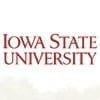Porcine reproductive and respiratory syndrome virus challenge alters jejunum chemosensing mRNA abundance in grower pigs
Published: March 28, 2025
Source : N. Gabler 1,*, S. Curry 1, W. Schweer 1, C. Loving 2 / 1 Iowa State University; 2 National Animal Disease Center, USDA, Ames, IA, United States.
Summary
Keywords: chemosensing, intestine, Porcine Reproductive and Respiratory Syndrome virus
Introduction:
Chemosensing in the gut involves G protein-coupled receptors and their associated G proteins, including taste 1 receptors (T1Rs) and taste 2 receptors (T2Rs). Sweet taste is recognized by T1R2+T1R3 heterodimers and umami flavors by T1R1+T1R3 heterodimers; however, bitter perception is detected by an array of T2Rs. Advances in gastrointestinal chemosensing have uncovered mechanisms by which specific nutrient and pathogen components evoke multiple neuroendocrine and metabolic responses that alter appetite and innate immunity. However, nothing is known about how these taste receptors are regulated during pathogenic challenges in pigs. Symptoms of porcine reproductive and respiratory syndrome virus (PRRSV) in growing pigs often include suppressed growth rates and feed intake. Therefore, the objective of this study was to determine the extent to which jejunum bitter and sweet taste receptor mRNA abundance changes during a PRRSV challenge in grower pigs.
Materials and Methods:
Sixteen mixed-sex pigs approximately ten weeks-of-age and naïve for PRRSV were allotted into 2 treatments: sham (Controls) and PRRSV inoculated. Pigs in the PRRSV group were intranasally inoculated with 105 TCID50/ml of a 1-7-4 PRRS virus isolate (day post inoculation (dpi) 0). At dpi 10, all pigs were euthanized. At necropsy, jejunum sections were isolated, flushed with saline and mucosal scrapings collected. Total RNA was isolated from mucosal scraping, cDNA synthesized and quantitative real-time PCR used to determine the mRNA abundance of nutrient transporters and taste receptors.
Results:
Compared to the Controls, PRRSV reduced (P < 0.001) glucose transporter 2 (GLUT2) mRNA abundance (1.00 vs. 0.27, respectively), but not sodium dependent glucose transporter 1 (SGLT1, P = 0.50). Sweet taste receptor T1R1 mRNA abundance was also reduced (P = 0.020) in PRRSV compared to Controls (0.52 vs 1.00, respectively); however, there was only a tendency (P < 0.10) for PRRSV to reduce T1R2 and T1R3 mRNA abundance. There was no difference (P > 0.10) in bitter taste receptor mRNA for T2R38, T2R9 or T2R4 abundance on dpi 10 of PRRSV infection. The fatty acid receptor, GPR120, which has been shown to have anti-inflammatory, insulin-sensitizing and glucagon like peptide-1 promoting effects was down regulated (P < 0.001) due to PRRSV compared to Controls (0.46 vs 1.00, respectively). The short chain fatty acid receptor, GPR41, mRNA did not differ (P = 0.24) between groups.
Conclusion:
In conclusion, PRRSV-challenged pigs had significant reductions in jejunum T1Rs, GLUT2 and GPR120 mRNA abundance. This may indicate changes in intestinal chemosensing induced by PRRSV challenge or could be reflective of reduced feed intake.
Disclosure of Interest: None Declared.
Published in the proceedings of the International Pig Veterinary Society Congress – IPVS2016. For information on the event, past and future editions, check out https://www.theipvs.com/future-congresses/.
Content from the event:
Related topics:
Mentioned in this news release:



Recommend
Comment
Share

Would you like to discuss another topic? Create a new post to engage with experts in the community.











